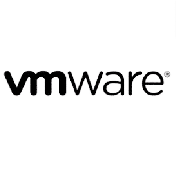Seminarinhalt
Programm
- Introduction to DevOps
- Plan Agile with GitHub Projects and Azure Boards
- Design and implement brancht strategies and workflows
- Collaborate with pull requests in Azure Repos
- Explore Git hooks
- Plan foster inner source
- Manage and configure repositories
- Identify technical debt
- Explore Azure Pipelines
- Manage Azure Pipeline agents and pools
- Describe pipelines and concurrency
- Design and implement a pipeline strategy
- Integrate with Azure Pipelines
- Introduction to itHub Actions
- Learn continuous integration with GitHub Actions
- Design a container build strategy
- Create a release pipeline
- Explore release recommendations
- Provision and test environments
- Manage and modularize tasks and templates
- Automate inspection of health
- Introduction to deployment patterns
- Implement blue-green deployment and feature toggles
- Implement canary releases and dar launching
- Implement A/B testing and progressive exposure deployment
- Integrate with identity management systems
- Manage application configuration data
- Expore infrastructure as code and configuration management
- Create Azure resources using Azure Resources Manage templates
- Create Azure resources by using Azure CLI
- Explore Azure Automation with DevOps
- Implement esired State Configuration (DSC)
- Implement Bicep
- Introducton to Secure DevOps
- Implement opensource software
- Software Composition Analysis
- Security Monitoring and Governance
- Explore package dependencies
- Understand package management
- Migrate consolidate and secure artifacts
- Implement a versioning strategy
- Introduction to GitHub Packages
- Implement tools to track usage and flow
- Develop monitor and status dashboards
- Share knowledge within teams
- Design processes to automate application analytics
- Manage alerts, blameless retrospectives and a just culture
Zielgruppen
Vorkenntnisse
- Cloud Computing-Konzepte, einschließlich eines Verständnisses von PaaS-, SaaS- und IaaS-Implementierungen.
- Erfahrung in Bezug auf Azure-Verwaltung und Azure-Entwicklung mit nachgewiesenen Kenntnissen in mindestens einem dieser Bereiche
- Kenntnisse in Bezug auf Versionskontrolle, agile Softwareentwicklung und die wichtigsten Prinzipien der Softwareentwicklung Es wäre hilfreich, wenn Sie Erfahrung in einem Unternehmen hätten, das Software liefert.
Trainings zur Vorbereitung
Bestandteil von
Wichtige Information
Mögliche Zertifizierung: Microsoft Azure DevOps Engineer




War sehr angenehm, Trainer war sehr motiviert.
Designing and Implementing Microsoft DevOps Solutions
15.09.2023War sehr angenehm, Trainer war sehr motiviert.
— Michal G.Sehr gute Vorbereitung für die AZ-400 Zertifizierung
Designing and Implementing Microsoft DevOps Solutions
20.07.2021Sehr gute Vorbereitung für die AZ-400 Zertifizierung
— Bernhard P.Christian Nagel war sehr und hat auch den Inhalt gut transportiert!
Designing and Implementing Microsoft DevOps Solutions
25.06.2021Christian Nagel war sehr und hat auch den Inhalt gut transportiert!
— Jonas S.